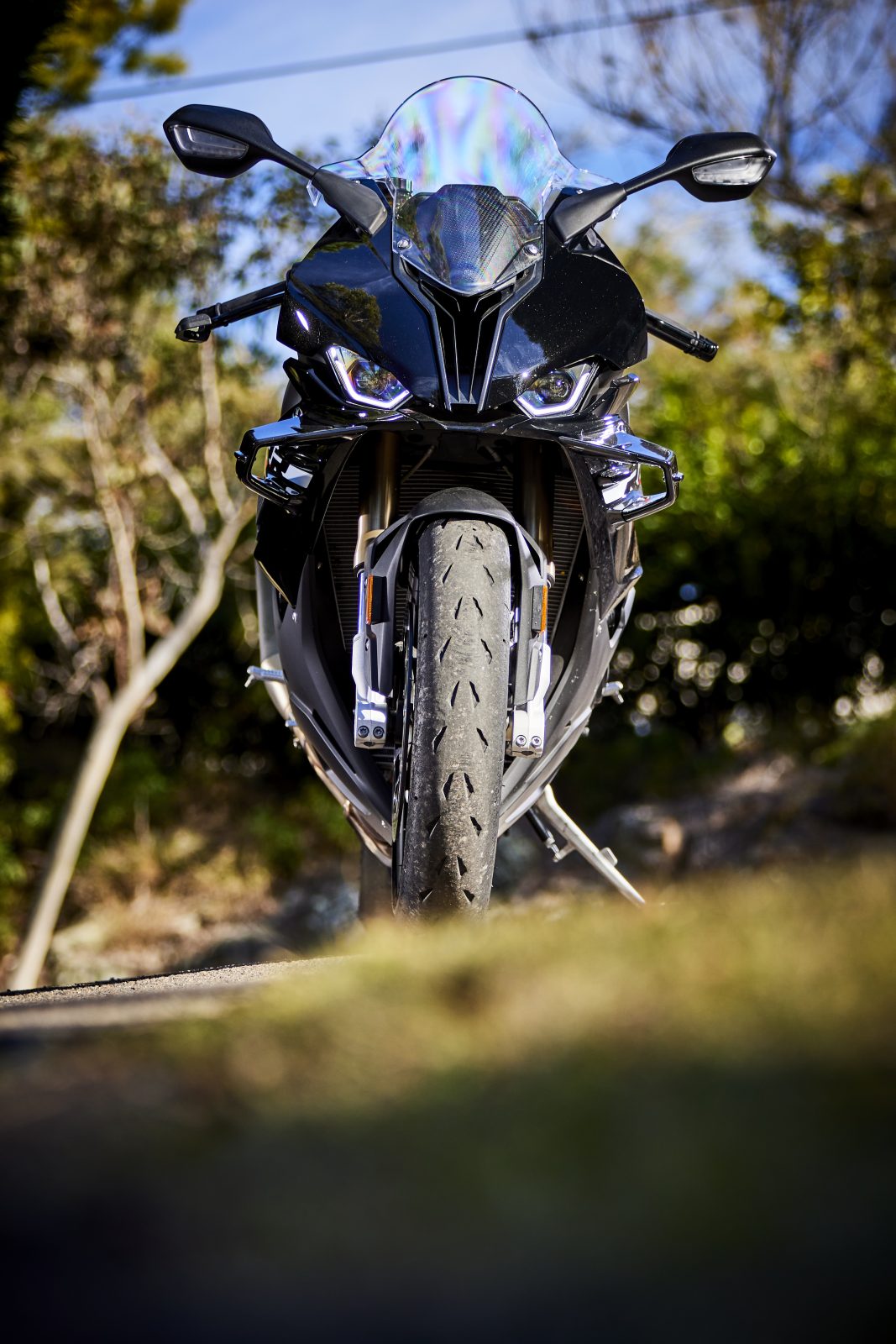I feel a bit like Batman on the all-black BMWS 1000 RR Race: it’s so stealthy it’s almost un-recognisable to the untrained eye. So much so that a guy on the ferry asked me if I liked my Honda. He was riding an S 1000 R…
The RR suffix traditionally stands for Race Replica, so you know what you’re getting yourself into, but this particular bike is the S 1000 RR Race with extra race-spec bling included. Over the standard S 1000 RR it has tyre-pressure sensors, M forged wheels with a larger 200-section rear tyre, M endurance chain, sports silencer by Akrapovic, dynamic damping control, riding modes pro, heated grips, cruise control and a billet pack.
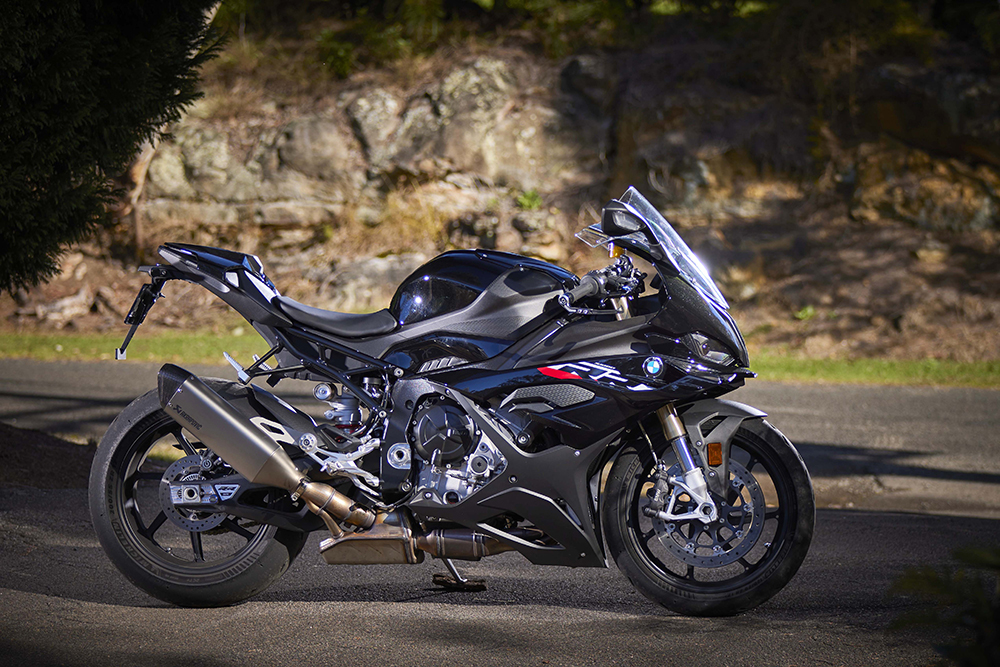
The build quality of the S 1000 RR Race is typical BMW and nothing has been overlooked. The finish is exceptional and it looks like an absolute rocket just at rest. The fairings are fully wind-tunnel developed and the wings are functional items providing over 16kg of downforce at 300km/h. The switchblocks are familiar items to BMW riders, as is the huge 6.5-inch TFT dash. There is more information available than you would ever need, even at the racetrack. See the sidebar for the full details.
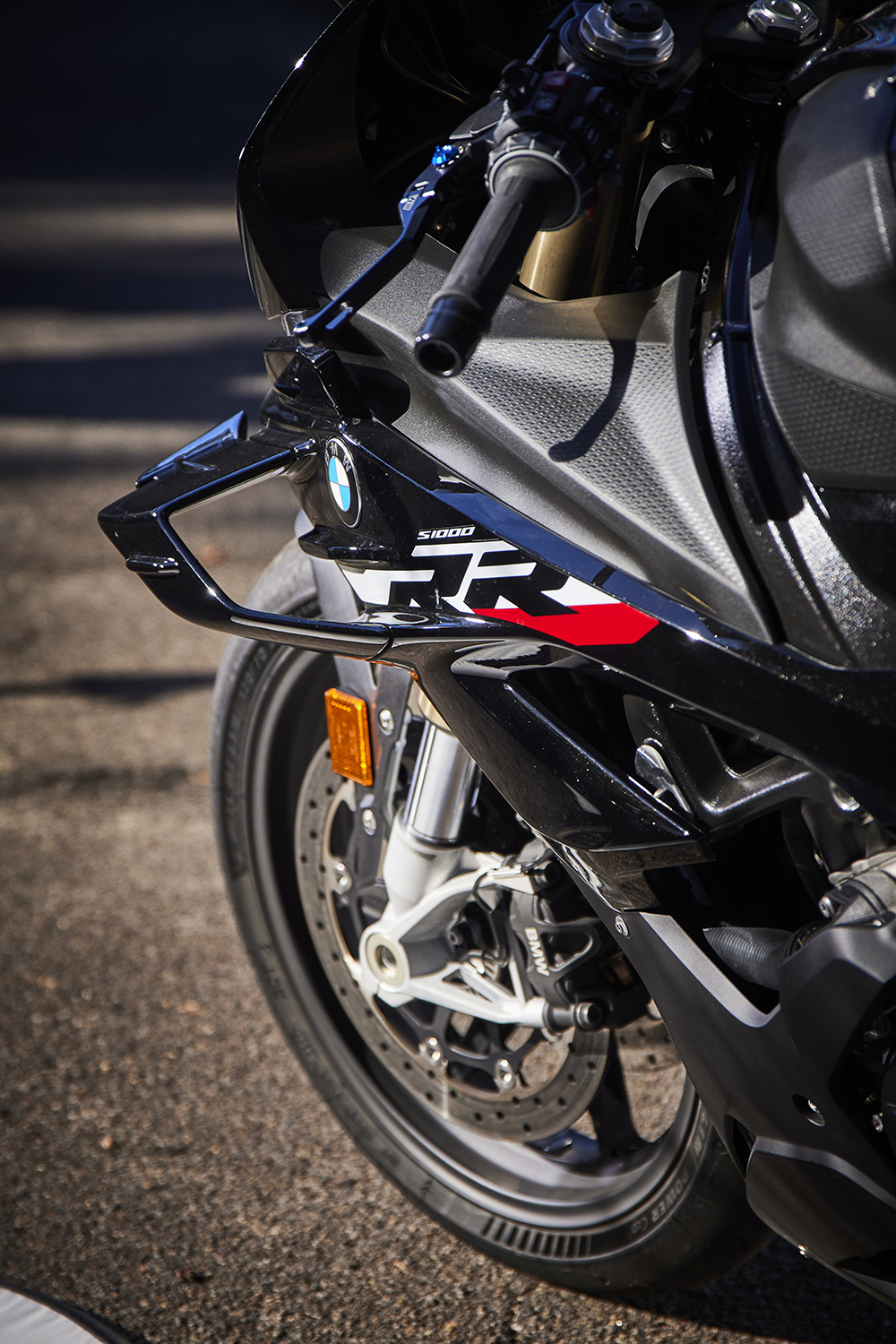
The S 1000 RR Race pumps out 154kW (210hp) and weighs in at just 197kg full of fuel and ready to ride. I was somewhat apprehensive when I picked up the machine, partly because I know I need my licence for work and partly because I mentally took note of the brand-new Michelin Power Cup 2 tyres that had just been fitted – I did not want to be the guy scraping himself up off Parramatta Road.

I need not have worried, as the S 1000 RR Race is a pussycat at low speeds – even clicking through the quickshifter at little above idle is silky smooth – and zooming through peak-hour traffic is a pleasure. The RR isn’t very wide so you can put it through the smallest of gaps. The cable-actuated clutch is very light and precise, making quick getaways from the lights a breeze. I can feel a little bit of warmth radiating up when the fan cuts in, but it is far from anything to be concerned about.
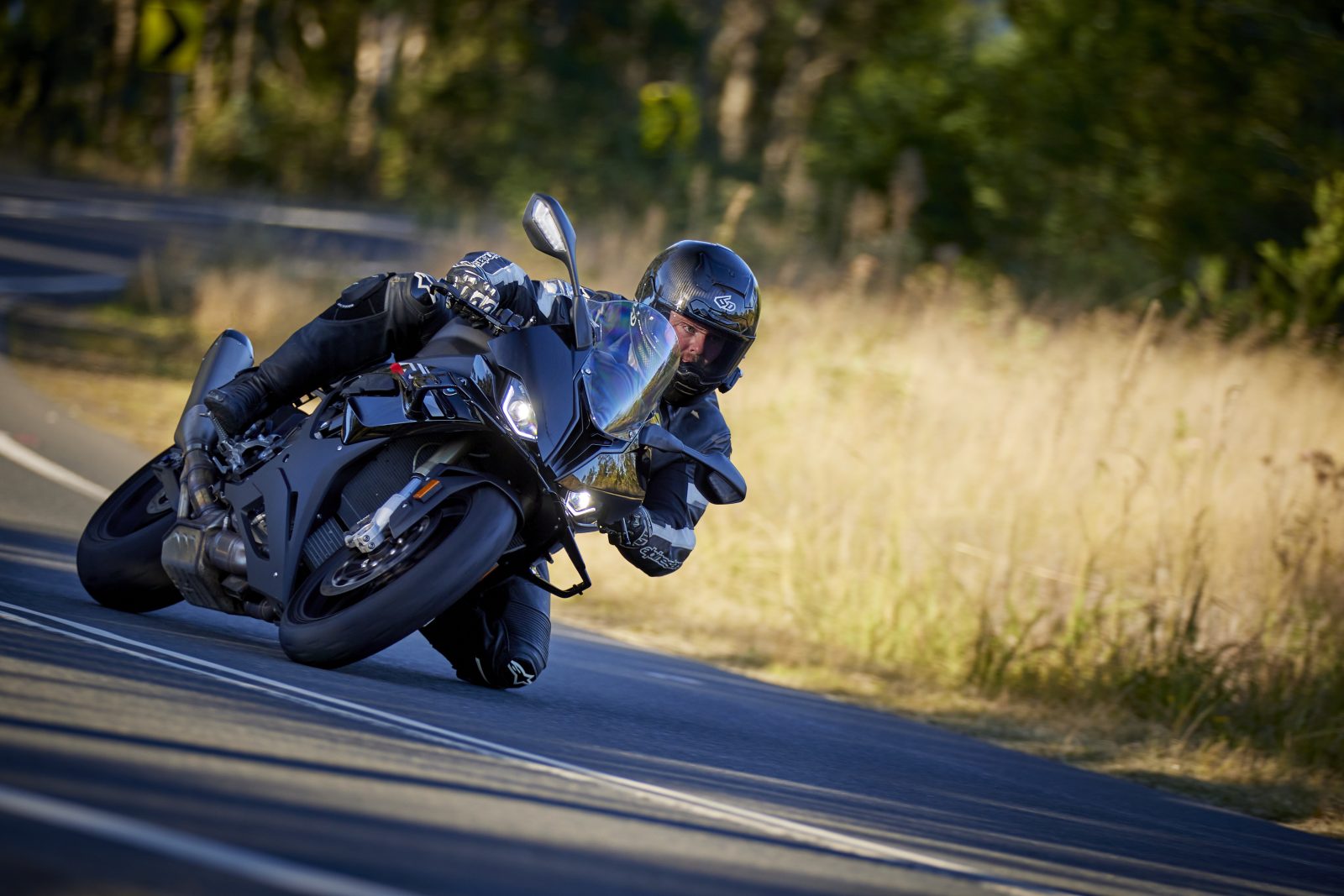
The 999cc soul of the S 1000 RR Race has a whole heap of wizardry going on inside. BMW utilises shift cam technology which allows the cam to change profile and increase duration and lift of the valve actuation. Inside the airbox is a variable intake system that changes the length of the intake tubes based on throttle position and revs. These help the bike produce bucketloads of torque and drive in the lower part of the rev range, while still allowing a rocket-like top-end surge that seems to go on forever. The power peaks at 13,750 revs, but the bike will let you rev all the way to 14,600rpm when required. The Akrapovic silencer looks great and allows a reasonably raspy tune to be heard. The lion’s work of the exhaust system is done by the massive cat converter and link pipe that keeps things legal for Euro 5 emissions laws.
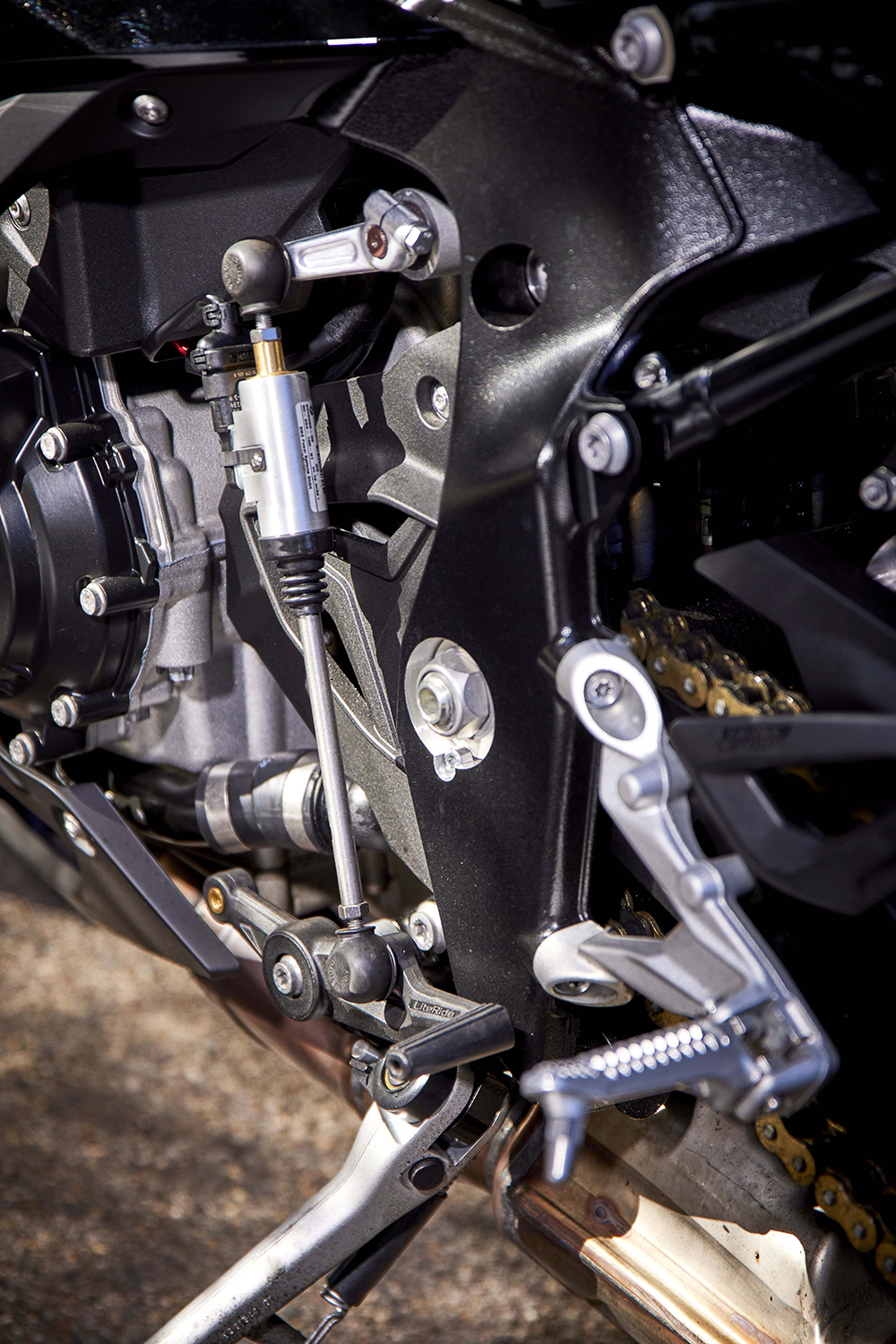
It’s a complicated setup, but thankfully the wizardry allows a reasonable engine note as well as the pops to be emitted during upshifts under power. And if you have the engine braking map set for the track, it cackles and rumbles on the overrun to reduce harsh engine braking. I can only imagine how wicked it would sound with a full race system – with earplugs, I presume.
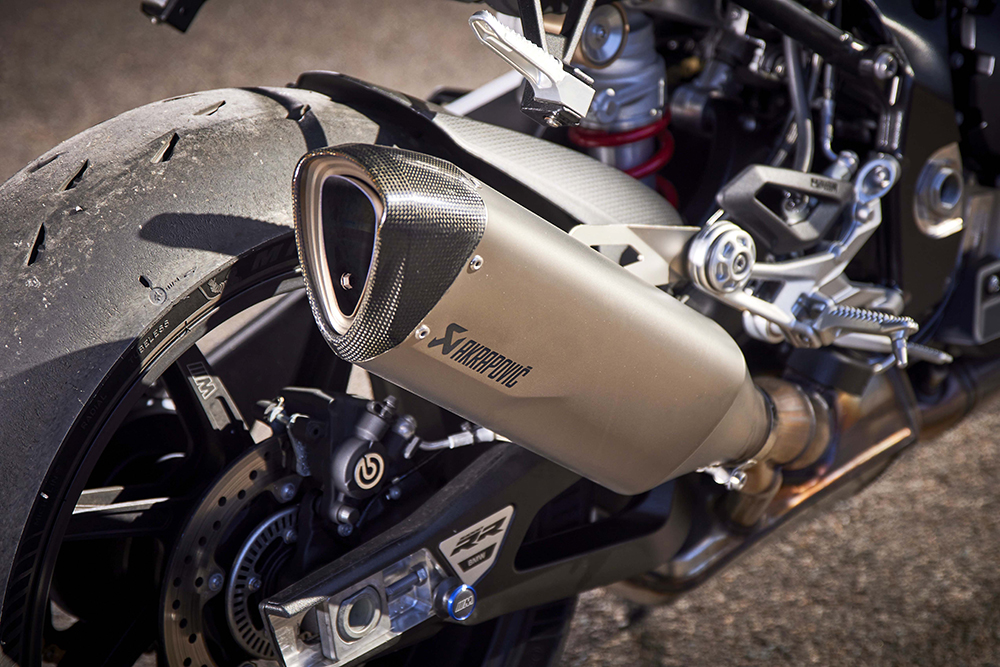
The S 1000 RR Race feels on the tall side when you fling a leg over it. I partly attribute this to the 200-section rear tyre; it is huge. The seat height is noted as 824mm, which isn’t overly tall for most. The reach to the handlebars is quite reasonable for my 175cm frame, and I find the sporty riding position to be very accommodating.

The S 1000 RR Race is ultimately at home on the racetrack and most of its features are of benefit while doing trackdays or racing. But it does have a few tricks up its sleeve for the road, too, like cruise control and heated grips. The Race edition has DDC – or dynamic damping control – and depending on which ride mode you have selected will adjust the damping on the fly depending on speed, lean angle and suspension travel. So, while traveling on crappy roads which, let’s face it, is most of the time, the suspension is very forgiving. When it’s time to up the pace a bit, select the Dynamic ride mode and the suspension gets firmer and the traction control intervention is reduced. I spent most of the time in road and dynamic modes. But after having a few moments under hard acceleration in cold conditions, I decided to give the Race Pro modes a go. In Race Pro the fun really starts, where you are able to customise individual settings like engine map, engine braking, traction control, ABS modes and damping settings. You can select seven different levels of traction control intervention on the fly from the left switchblock. This allowed me to set up a mode where I could have full power available, traction control up to level six, wheelie control in performance mode, reduced engine braking, ABS set up to allow some slide under brakes and the damping to a middle-of-the-road setting. I enjoy the bike most in this setting being able to increase or decrease the TC as I please. If the need arises to turn all TC and wheelie control off, it’s just a long press of the traction button on the left switchblock (which is just like a GS).

In Race Pro, launch control and the pitlane speed limiter are also active, and setting the pitlane speed limiter to 40km/h for school zones gave me more of a giggle than it should have and I tried launch control a couple of times for research purposes. It works as expected: holds the revs at a designated point, reduces torque to the engine and controls the wheelie until you are up to speed. Cool.

So how does it go? Like a bloody rocket! Holding the thing flat biscuit in any gear requires serious commitment and I wish I could have taken the beast to the racetrack. Alas, I did find some sneaky back roads to give it a good squirt and it is a lot to take in. The power delivery is seamless: it just keeps on piling on speed relentlessly until you give in. Then there are the brakes; BMW claims the brakes are “best in class”, which is a bold claim when comparing to the expertise of Brembo on most other high-end bikes.
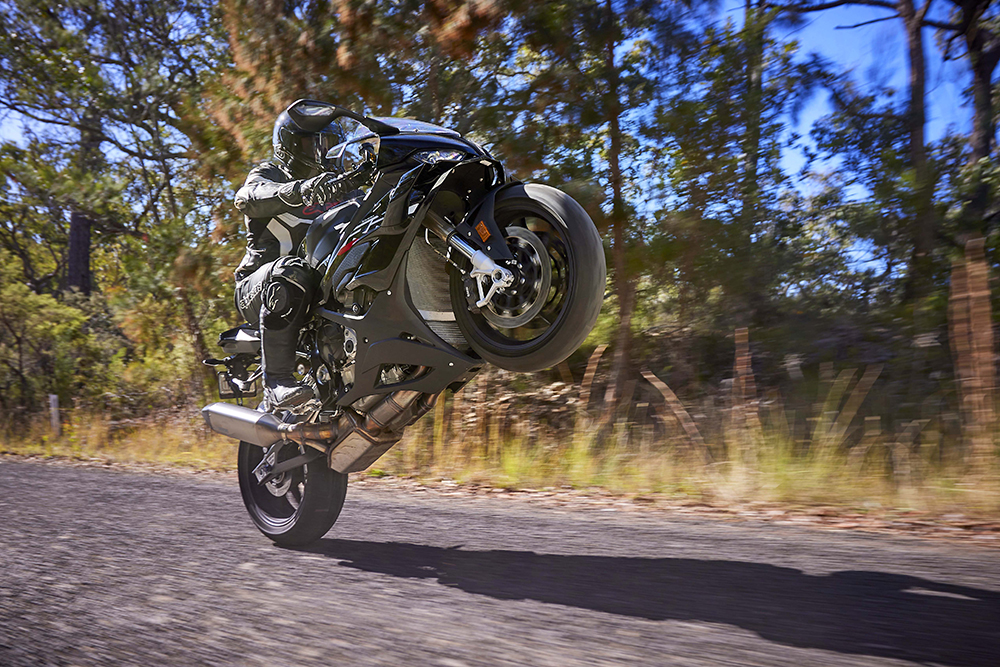
But I can see BMW’s reasoning: the brakes are simply amazing. No matter the speed, you can grab them with one finger and your eyeballs almost pop out of your face. The ABS Pro system assists with the rear brake in heavy or emergency situations, helping get things under control in all modes except Race Pro. I know there isn’t such a thing as an un-crashable bike, but I get the feeling that besides blatantly running into something or low-siding in the wet/cold, this BMW has got you covered in most situations.
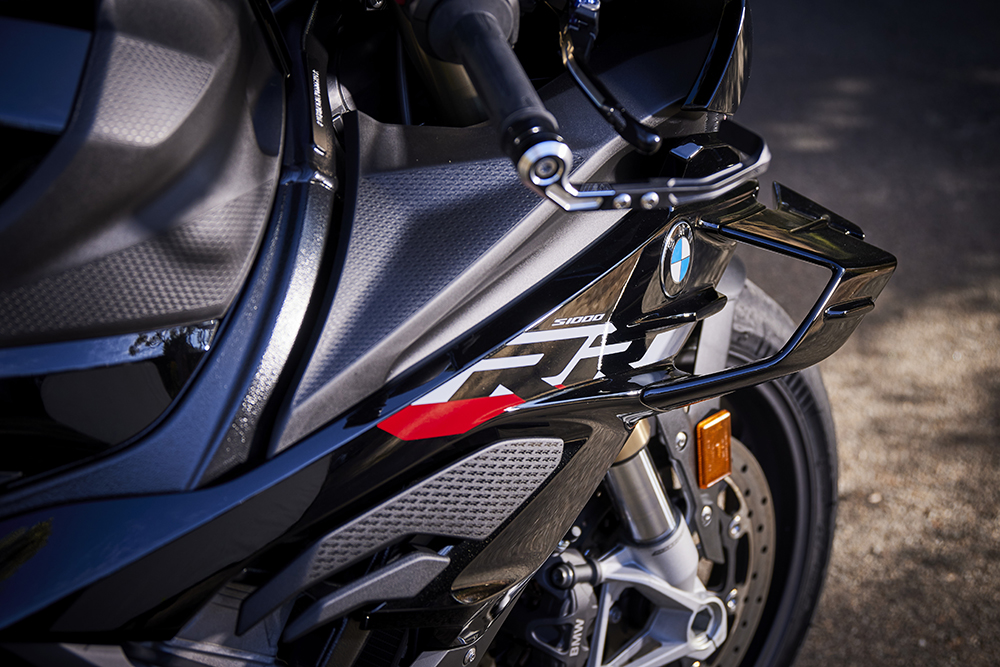
The S 1000 RR Race is super agile and turns almost telepathically, I feel the M forged wheels help out here as they are a bit lighter than the stock wheels on the regular version. They’re still not as light as the M Carbon jobbies on the M-Sport, however. The Power Cup 2 tyres need to be warm before you get too excited, as when they are cold the RR will spin the wheel in a straight line. They are a road-legal track tyre after all, but once you’ve got some heat in them they perform exceptionally well.
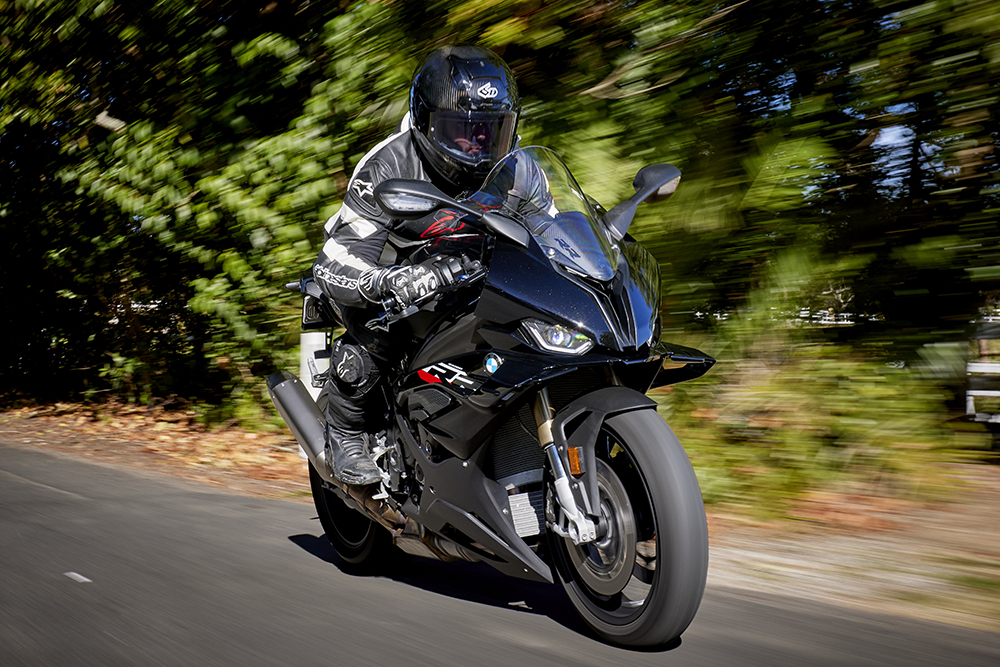
The bike is kind of tall so you can achieve a high lean angle without scraping anything or feeling like you’re close to a limit. I had the lean angle indicator up to 51 degrees and didn’t even touch a toe on the ground.
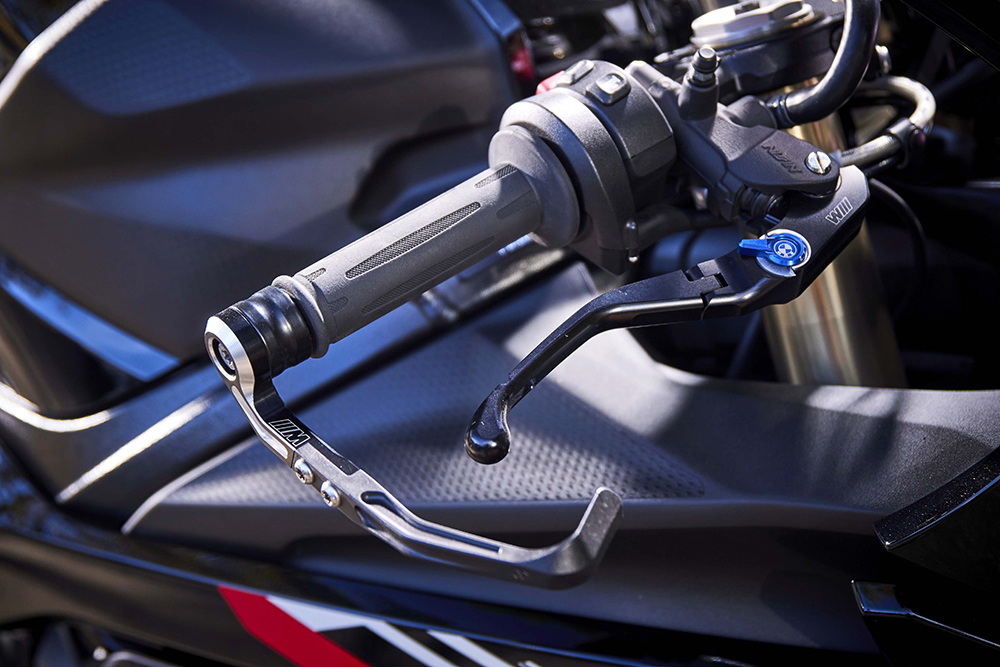
The stability mid-corner is confidence-inspiring, and dragging a knee feels relatively comfortable and as safe as it can be on the road. But you can’t help but feel that riding this bike on the road, even at pace, isn’t even scratching the surface of its full range of capabilities.

It doesn’t really sing until you are above prison speeds, getting a knee down and generally riding like Peter Hickman at the Isle of Man. Superbikes these days are no joke – anyone who thinks they need one for the road is kidding themselves – but here we are, riding epic world-class racing bikes on our crappy roads and the smiles and mind-blowing moments are almost endless.
Test David Watt + Photography Josh Evans
